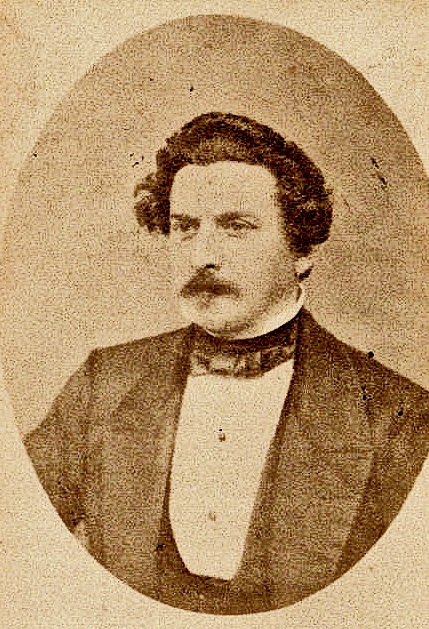Content
Fragments from the book: Nuhn A. Lehrbuch der practischen Anatomie als Anleitung zu dem Präpariren im Secirsale (1882). The author discusses the anatomy and role of the ligamentum capitis femoris (LCF), considering it a synovial formation, a source of synovial fluid. The text in Russian is available at the following link: 1882NuhnA.
Quote, p. 175.
ß. Hüftgelenk
(Articulatio coxae).
Dasselbe
entspricht dem Schultergelenk und ist, gleich diesem, em Kugelgelenk; nur
besitzt es zur Aufnahme des Gelenkkopfes eine tiefe, kugelig ausgehöhlte
Gelenkpfanne (Acetabulum), die den Gelenkkopf (Caput femoris) zu einem grossen
Theil umschliesst, daher auch als Nussgelenk (Enarthrosis) unterschieden Wird,
obschon es nicht die Einrichtung der in der Mechanik angewendeten sog. Nuss,
von der die Bezeichnung entlehnt wurde, besitzt. Auch unterscheidet es sich vom
Schultergelenk noch durch das in seinem Innern gelegene Ligamentum teres
femoris, welches den Grund der Pfanne mit dem Gelenkkopfe verbindet.
Die Theile, welche dieses Gelenk bilden, sind daher, ausser dem ihm eigenen Lig. teres, die gleichen, als am Schultergelenk, uämlich 1) die Synovialkapsel, 2) eine die letztere umschliessende äusserst kräftige Faserkapsel und 3) ein dem Rande des Acetabulum aufsitzendes faserknorpeliges Labrum glenoidale.
Quote p. 178-179.
Runden Schenkelbands (Lig.
teres femoris).
Dasselbe ist ein etwas abgeplatteter weicher Strang, der von der Fovea und Incisura acetabuli breit ausgeht und etwas verschmälert zu der höherstehenden Fovea capitis femoris fast senkrecht innerhalb der Pfanne emporsteigt. Sein Aussehen ist mit der einer grossen mit Fett, Bindegewebe und Gefässen erfüllter Synovialfalte vergleichbar und besteht auch wesentlich aus einer Synovialscheide, in deren Höhle Bündel von Bindegewebe mit Fettläppchen, ausserdem Blutgefässe, welche durch die Incisura acetabuli von aussen eintreten {Arteria acetabuli) oder durch dieselbe als Venen austreten (Vena acetabuli), sich befinden. Von einem Faserbande, das zu ähnlich mechanischen Leistungen befähigt wäre, wie sonst die Faserbänder es sind, findet sich im Innern dieser Synovialscheide, so gewöhnlich dies auch behauptet wird, nichts vor, wovon man sich nach Eröffnung des Hüftgelenkes und am Durchschnitt durch dasselbe leicht überzeugen kann.
Welche Bedeutung das Lig.
teres für das Hüftgelenk habe, darüber hat man schon die verschiedensten
Vermuthungen ausgesprochen. Meistentheils hat man ihm eine mechanische Leistung
zugeschrieben, indem man es bald als Hemmungsband für gewisse Bewegungen, z. B.
für Adduction des Oberschenkels, ansah, oder man glaubte, es solle durch Tragen
des Beckens einen allzugrossen Druck des obern Umfanges der Gelenkpfanne auf
den Kopf des Schenkelbeines bei der aufrechten Stellung vermindern. Zu solchen
mechanischen Leistungen besitzt es indess nach seinem Bau gar keine Befähigung
und bezüglich der ihm angewiesenen Hemmung der Bewegungen wäre gar nicht
abzusehen, warum es als Hemmungsband in's Innere des Gelenkes verlegt worden
sei, da eine Verstärkung der entsprechenden Wand der Faserkapsel diesem Zweck
viel besser hätte entsprechen können. Allein auch abgesehen hiervon, wird die
Richtigkeit der Annahme einer solchen mechanischen Leistung schon durch den
Umstand widerlegt, dass wenn man das Hüftgelenk derart von der Beckenhöhle aus
eröffnet, dass das fragliche Band an seinem Ursprünge nicht verletzt wird, man
bei keinerlei Bewegung des Gelenkkopfes dasselbe in grössere Spannung treten
sieht. Andererseits hatte man auch schon es als ein Leitband für Blutgefässe
{Art. acetabuli) angesehen, welche zum Gelenkkopf geführt werden sollten, da
dieser in zu grossem Umfange der Zufuhr von Blut von der Beinhaut her entbehren
müsse. Allein diese an sich nicht wenig plausible Ansicht fand ihre Widerlegung
dadurch, dass die Injection der Arterien des Bandes deutlich zeigt, dass
dieselben nicht in den Schenkelkopf eingehen, sondern an der Grenze des Bandes
schleifenförmig wieder umbiegen.
Um die wahre Bedeutung des Bandes zu erkennen, muss man erwägen, dass der Anschluss des Labrum glenoidale an dem Gelenkkopf ein so inniger ist, dass, nach völliger Entfernung der Gelenkkapsel, die umgebende Luft bei angewendetem Zuge auf den Gelenkkopf nicht in's innere des Gelenkes einzudringen vermag, und dass sonach die von der kynovialkapsel abgesonderte Synovia noch viel weniger eindringen wird, Ur& die Gelenkfläche in der Tiefe der Pfanne anzufeuchten. Um aber diesen tiefliegenden Theilen der Gelenkflächen nicht dauernd die Anzüchtung mit Synovia zu entziehen, musste nothwendig in diese Tiefe eine zweite Synovia liefernde Quelle gelegt werden, und diese ist das Ligamentum teres, das nur eine synoviale Bildung ist.
Fig. 18. Senkrechter
Querdurchschnitt des Beckens mit dem Durchschnitt des Hüftgelenkes. U.
Harnblase; R.Mastdarm; Vs. Samenblase der rechten Seite; ds. Samenleiter; iL M
iltacus internus; fil. Fascia iliaca; ftr. Fascia transversalis; ani. innerer
Leistenring; cri. oberer Schenkelring (ann. crur. internus); Gb.
Gimbernat'sches Band; rct. M. rectus; ile. Art. iliaca externa; vil. Vena
iliaca externa; epg. Art. epigastrica interna mit begleitenden Venen; obt.
Arteria, Vena et Nervus obturatorius; obta. Anomale Arteria obturatoria, welche
aus der Art. epigastrica kommend, hinter dem Lig. Gimbernati herabsteigt;
plv.Fascia pelvis; plv'. inneres Blatt derselben; fo. Fascia obturatoria oder
äusseres Blatt der Fascia pelvis; obi. Obturator internus; pud. Vasa pudenda
und N. pudendus, zwischen zwei Blätter der Fase, obturatoria eingelegt; arc.
Arcus tendineus fasciae pulvis; lev. M. levator ani; sph. Sphincter ani ext.;
fp. Fossa perinaei s. anolschiadica; syn. Synovialhaut des Hüftgelenkes; ter.
Lig. teres; lbr. Labrum glenoidale; cps. Faserkapsel.
Nuhn A. Lehrbuch der practischen Anatomie als Anleitung zu dem Präpariren im Secirsale. Stuttgart: F. Enke, 1882. digi.ub.uni-heidelberg.de
The work is cited in the following publications: Продуцирующая функция LCF. Обзор
Anton
Nuhn (1814-1889) was a German anatomist, lecturer,
prosector, professor at the institute of anatomy in Heidelberg. wikipedia.org
 |
| Anton Nuhn (before 1887) Unknown photographer; original in the wikipedia.org collection (CC0 – Public Domain, fragment). |
ligamentum capitis femoris, ligamentum teres, ligament of head of femur, anatomy, role, production of synovium
NB! Fair practice / use: copied for the purposes of criticism, review, comment, research and private study in accordance with Copyright Laws of the US: 17 U.S.C. §107; Copyright Law of the EU: Dir. 2001/29/EC, art.5/3a,d; Copyright Law of the RU: ГК РФ ст.1274/1.1-2,7



Comments
Post a Comment